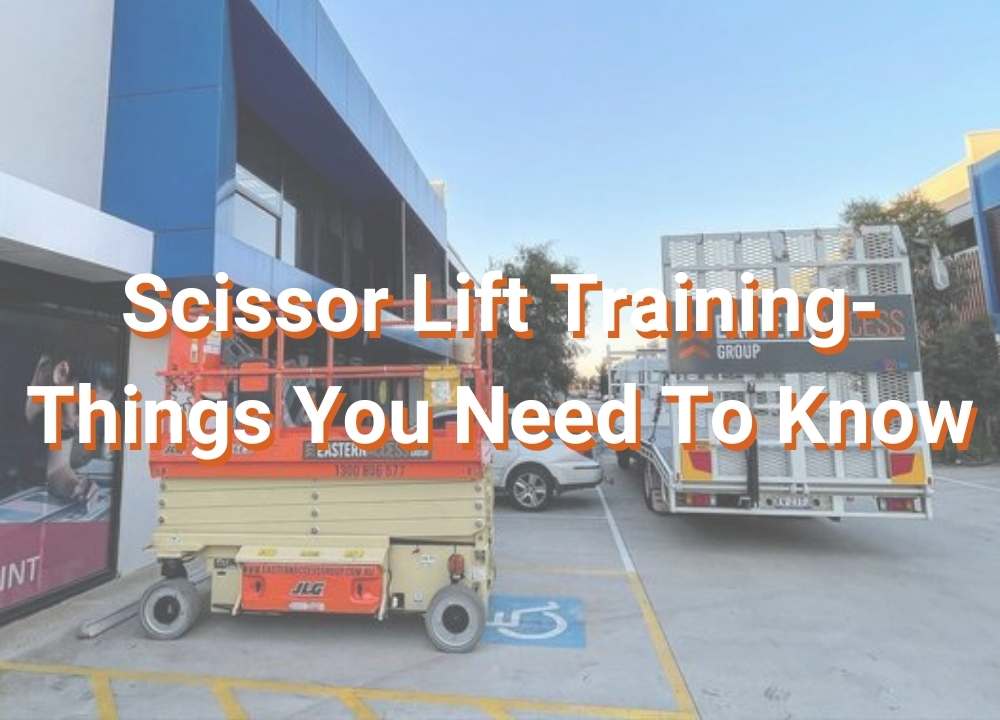Scissor Lift Training - What You Need To Know?
Scissor lifts are widely used used in various areas, such as construction and building maintenance, waste management and cleaning, farming, security services and many more.
Today they are commonly used in factories, warehouses and sometimes as part of industrial equipment such as forklifts & conveyors. They are also widely used to transport materials into cars to distant destinations. As well as this, they are now being deployed in other industries with high demand for fast delivery or heavy lifting tasks within limited space.
With the rising demand for scissor lifts in the construction industry, it is essential for those interested in this type of equipment to know more about them and their uses. That being said, it is also much important to have the proper training and license before putting your hands on any aerial lift equipment.
Have you ever wondered what scissor lift training is? Is it worth your time and money?
In this blog post, we’ll discuss scissor lift training and provide tips for those interested in learning the basics of getting hired as a scissor lift driver.
Table of Contents
What To Expect on a Scissor Lift Training
Scissor Lift Training is a class that covers the basics of using a scissor lift and how to use it safely. The trainer will explain the machine and show you how to use it safely and efficiently.

According to EWPA Australia, when you get a license to operate a scissor lift (and other EWP equipment) which is called the Yellow Card, you will be able to gain theoretical and practical skills in the following:
- Identification of hazards, evaluation of risks, and controls
- Inspection, sizing, and usage of fall arrest harnesses
- Using the data plate and handbook, determine the safe operating settings.
- Conduct operational inspections before and after
- EWP operation
- protocols for emergencies
- Evaluation of the theory and demonstration and actual observation
Benefits of Being a Licensed Scissor Lift Operator
Being a licensed scissor lift operator is a gratifying career, but it can also be challenging. There are many benefits to being a licensed scissor lift operator, including the following:
Working in a safe environment
You will have the opportunity to work with any time of people. You will also get the chance to travel worldwide and enjoy different cultures. This can give you an insight into other parts of the world and help you develop your language skills.
Being your own boss
You will be in charge of your work schedule, which means you control when and where you work. You will also be able to decide how much overtime pay you receive and how much rest time you take each day. This means there is no need for an employer to tell you when to come to work or when you should leave!
Earn extra income
As an independent contractor, there are no minimum wage requirements or employment taxes paid by the company that hires you (as long as they operate legally). You can earn as much or less than your competitors without worrying about losing customers due to lower prices or poor service.
Better career stability
Most companies prefer employing people who have worked in their business for a while, so they know how things work. So they can help out with any problems that may arise during operation or maintenance, which can save them time and money and reduce chances of accidents happening, which means fewer injuries on workers’ part and perhaps more profits for company owners due to fewer losses due to workers.
How To Take a Scissor Lift Training
When you are considering taking a scissor lift training course, there are many factors that you need to consider. If you want to get the most out of your scissor lift training, then you must do your research and make a decision based on the following:
1. The cost of the course
2. The length of time that it will take you to complete the course
3. The type of certification that you are looking for
4. The type of work environment that you are going into (i.e., construction or manufacturing)
Frequently Asked Questions
The training for scissor lifts is completed in a single day. Depending on several variables, including your familiarity with scissor lifts, the training may last four to eight hours. However, during the training, you would learn about every facet of operating a scissor lift.
A recognised training organisation(RTO) is where you may complete the scissor lift training. Only RTOs provide nationally recognised training programmes, and they will also be the ones to provide you with a licence once you have finished your training. Make sure the RTO where you receive your training is accredited.
Anyone 18 or older may enrol in the scissor lift training course. The training may also be open to those who are 16 years of age and possess a valid driver’s licence. Anyone interested in the course should also be able to communicate effectively in English, including reading and writing skills.
Conclusion
Scissor lifts are fantastic tools in any workplace. This is due to their numerous benefits and ease of use. Knowing where to start with your training can be challenging if you are thinking of getting a scissor lift or have one already.
You might learn all you need to know about using a scissor lift by enrolling in a scissor lift course. Additionally, you would be given a licence as confirmation that you are qualified to use scissor lifts. This would enable you to work professionally as well as increase your employability.
Several companies offer scissor lift training, and there are also many resources that you can use to learn about the correct way of using the lift. However, just make sure that your scissor lift training approach complies with all safety regulations.

